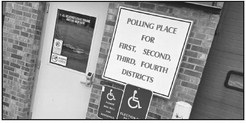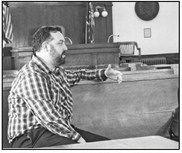Constitutional bail changes leave more questions for courts, legislature
As anyone who has spent time in a farm yard knows, a wounded animal is a very dangerous thing. They flail about attacking everything around them indiscriminately, even those who might be there to try to help them and often injuring themselves more in the process.
In November 2021, Wisconsin was severely wounded when an evil man plowed his vehicle through the Waukesha Christmas Parade with the intention of causing death and destruction. Six people were killed in the carnage and many others were grievously injured, suffering wounds to their bodies, minds and souls.
The incident and the trial which saw the perpetrator convicted and sentenced to live out his life behind bars brought people together in questioning how such a horrific act could have occurred and what could be done to prevent it from happening again.
Rather than diving into the deeper, more nuanced, and harder to resolve in a soundbite issue that led up to the incident, political pundits quickly latched onto the fact that the perpetrator had been out on bail from a prior assault involving a vehicle. Obviously, they surmised, this tragedy was the result of the criminal justice system being too soft and of the courts being a revolving door where criminals are caught only to be released time and again with token bail amounts or promises to show up to future court dates.
In the push to be seen doing something, legislators latched onto proposals to change the Wisconsin constitution to greatly expand the power of judges to take into other factors beyond the circumstances of the case with the goal of keeping people who have been arrested and accused of crimes locked up before their trials.
It comes as no surprise that the overwhelming majority of Wisconsin voters supported a constitutional change to allow judges to set bail conditions to protect the community from “serious harm.” Voters were also overwhelmingly in support that judges should take into account the “totality of the circumstances” in setting bail amounts “including the accused’s previous convictions for a violent crime, the probability that the accused will fail to appear, the need to protect the community from serious harm and prevent witness intimidation, and potential affirmative defenses.”
These are noble words seeking, at the surface level at least, to be focused on keeping honest people safe from the no-good folks who get arrested.
The challenge for the criminal justice system is how the courts and the legislature balance the rights of the community to feel safe against the basic rights of individuals to be considered innocent until proven guilty.
Keeping people who have been arrested or charged with a crime, but who have not actually been convicted, locked up prevents them from being able to continue to work and support their families or pay for an attorney to give an effective legal defense.
The sole purpose of the bail system is to ensure people who have been charged with wrongdoing, actually show up for court. Judges already had the power to account the seriousness of the crime in setting the bail amounts. For example, someone accused of stealing a loaf of bread is a far less flight risk than someone who is accused of murder and the bond levels will reflect that.
While passed with the intention of making people feel good about taking steps to supposedly make their communities safer, the constitutional changes approved in the April 4 election only muddy the waters and further aggravate a system that is already sharply divided by socioeconomic status.
Those with the means to pay large bail amounts will be out in hours versus those who cannot afford any bail amount. Justice shouldn’t be for just those who can pay for it.
In voting for the constitutional change, Wisconsin voters struck out in pain from the wounds inflicted in November 2021. The hard work comes now of ensuring the balance between vague promises to look out for public safety and rights of the accused.




